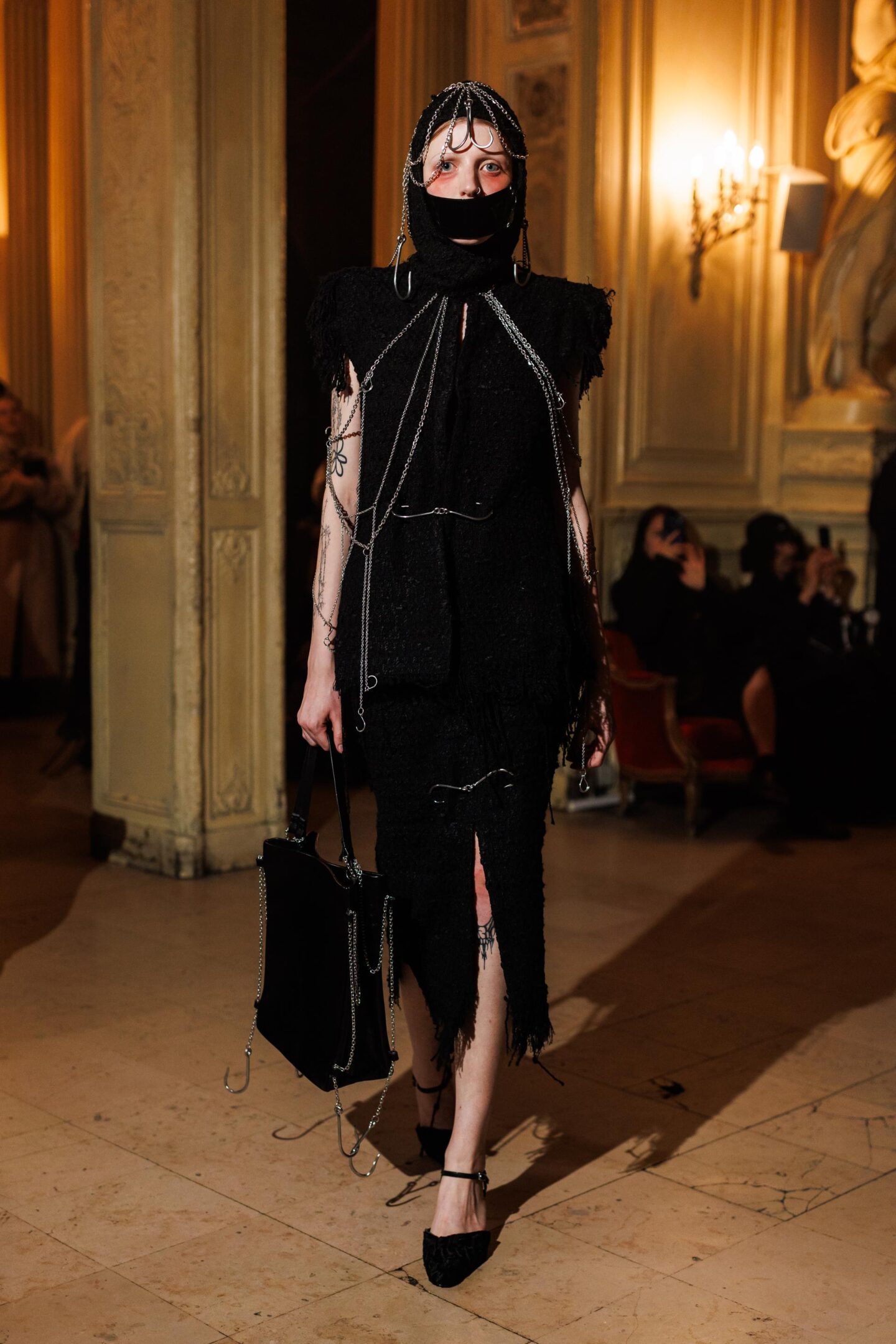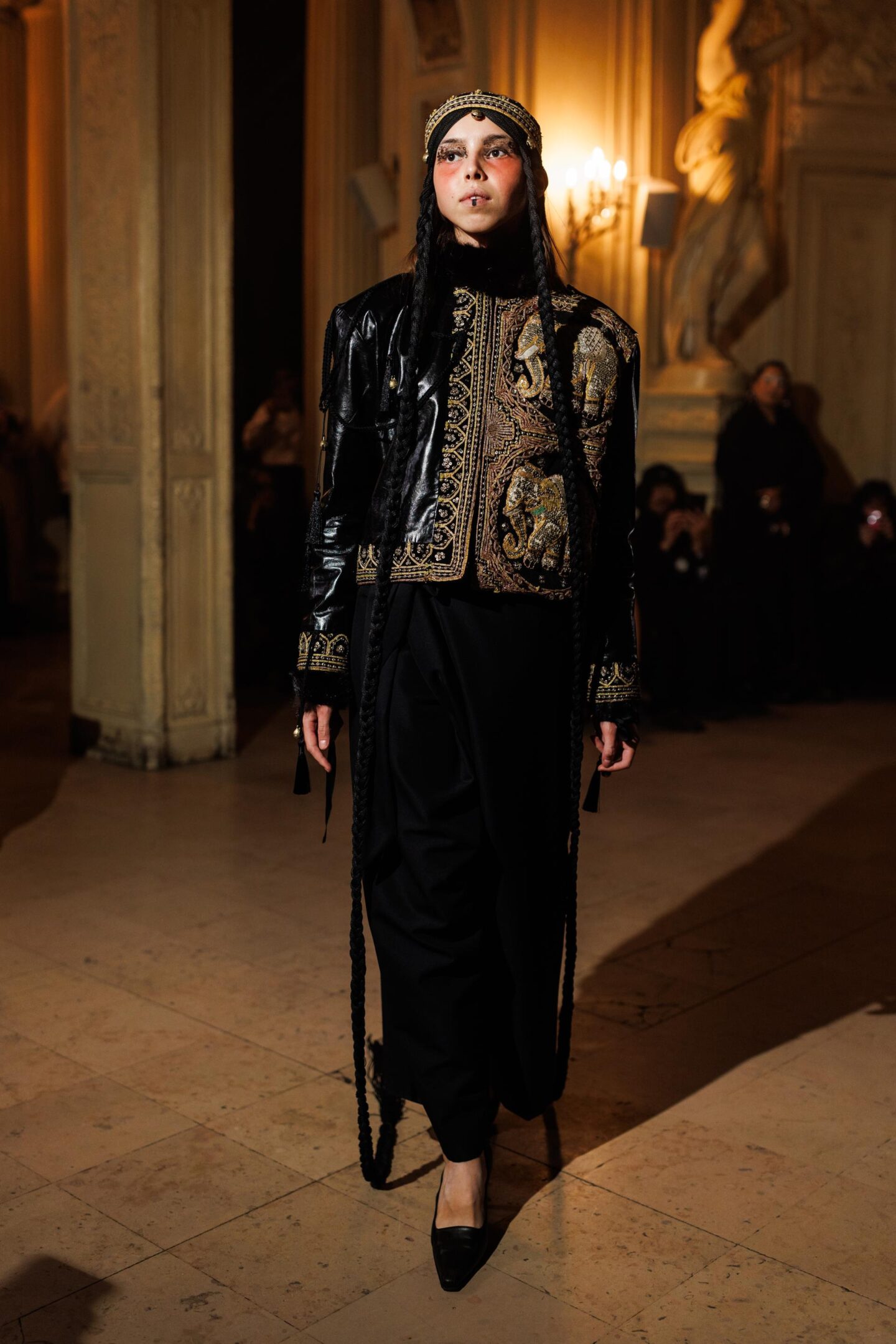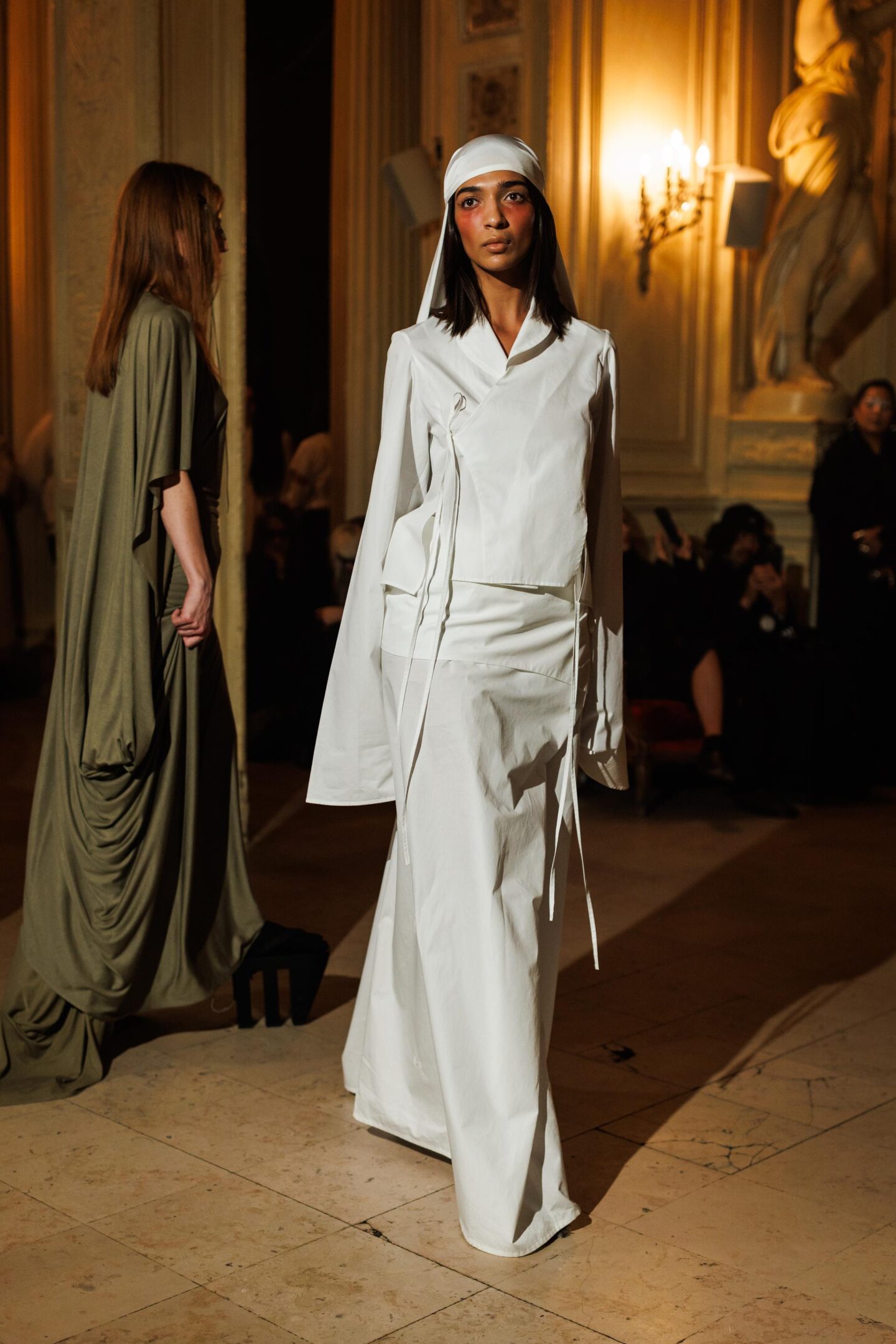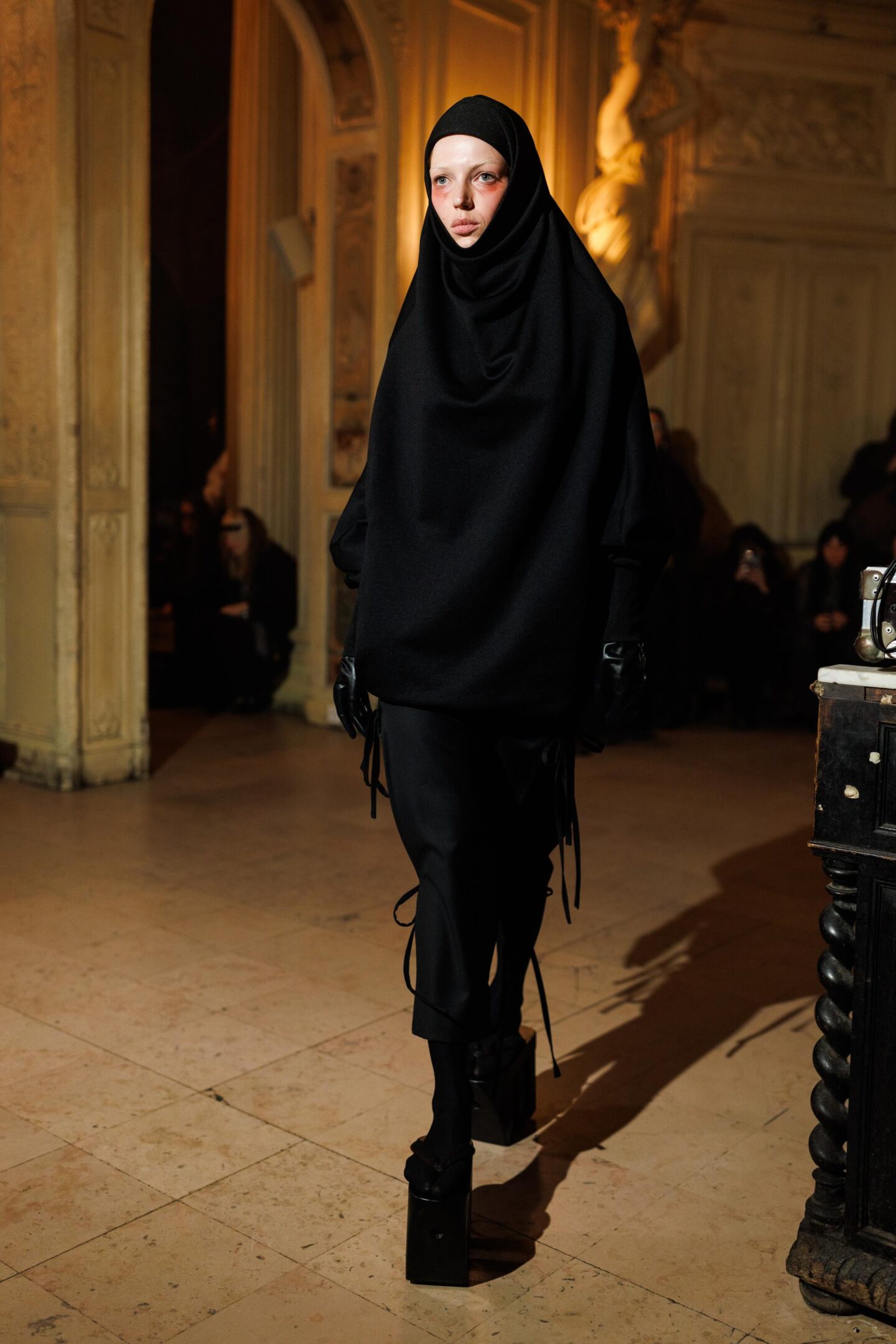

In my multidisciplinary practice look at spirituality – whether from Eastern or Western traditions – to seek a contemporary expression of this inherent wisdom through fashion and art.


This collection is a response to the turbulent times in which we live, where we are constantly confronted with unsettling images of reality. In the 1970s, Austrian performance artist Hermann Nitsch created severe performances which held a strong aesthetic beauty. He explained that society at the time was still haunted by the horrific images of the Second World War but lacked a healthy outlet through which to process and confront those images.


In the same research, I encountered various Jain philosophies— an Indian religious tradition centred on purity and non-violence -which also includes rigorous practices. Examples include periodic vows of silence and the use of a muhapatti (a small mouth-cover associated especially with Svetambara sub-traditions) as a symbol of restraint and care, and the initiation rite of kesh-lochan, in which hair is plucked by hand. Some monks cart! a peacock-feather whisk (often called pinchi) or a small broom (rajoharana) to gently sweep the ground before sitting, so as not to harm even the smallest creatures- an enduring symbol of non-violent living. Monastic dress varies by sect: Svetambara monks and nuns wear pure white robes, while Digambara monks traditionally practice nudity (with exceptions in some clerical roles).
The monks’ draped forms appear in the collection, accompanied by peacock-feather charms and accessories.
Photo © 2025 Ritual Projects
